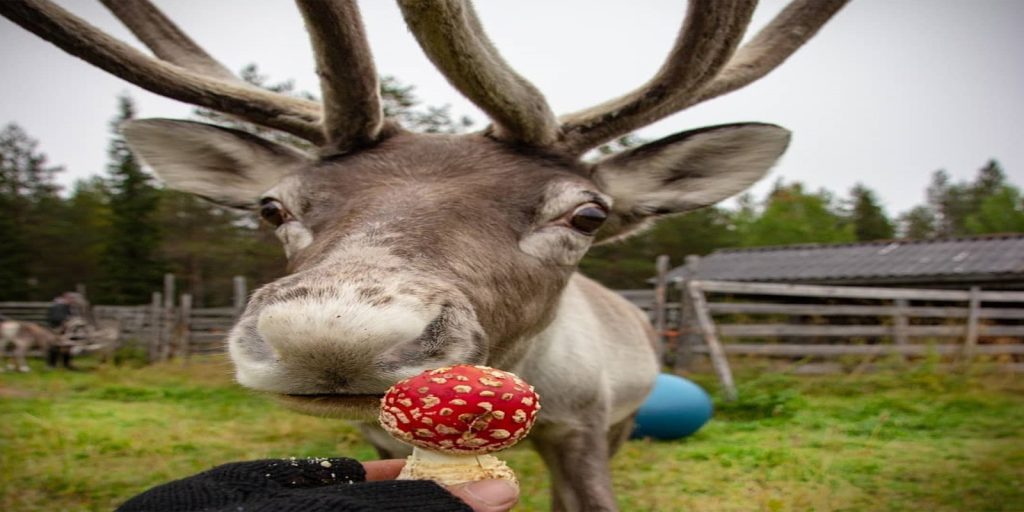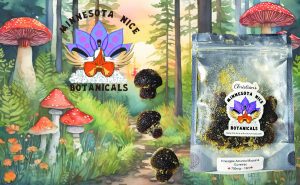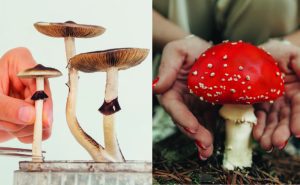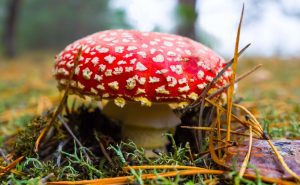In the past few months, there has been a flurry of articles about Amanita Muscaria, also known as fly agaric or amanita pantherina. Amanita is one of nature’s most exotic mushrooms found in the wild. While many people are familiar with its psychoactive properties (especially after eating it), few know that amanitas get utilized for medicinal purposes. Here we will discuss whether or not reindeer urine contains Amanita Muscaria and its effects.
What is Amanita muscaria?
Amanita muscaria is a hallucinogenic mushroom that can cause extreme intoxication. The mushroom grows parasitically on the roots of several birch trees, including the white birch. Reindeer urine traditionally gets used in Scandinavia to poison arrows, and some scholars believe that Amanita muscaria may have been responsible for the Norse gods’ favorite recreational drug.
Amanita muscaria is a mushroom that typically grows in deciduous forests. It is one of the most popular and well-known mushrooms in the world. The mushroom has been used for spiritual purposes by indigenous people for centuries. It is also known for its psychoactive effects, which include hallucinations and feelings of euphoria. Some people use Amanita muscaria to gain LSD-like experiences. This video by StoneAgeMan gives some terrific insights into the Amanita muscaria mushroom
In ancient times, it’s very possible that a shaman’s urine would have been chiefly water with hallucinogenic compounds. The body absorbs the hallucinogens in the fly agaric before the toxins release through the digestive system. Hallucinogenic chemicals get metabolized by the body and then excreted unchanged in the urine. Siberian people would observe the drunken behavior of Reindeer in northern Europe, attracted to the euphoric effects of the fly agaric, and would then slaughter the animals for food.
To read more about what Amanita muscaria mushrooms are, see our article, “What are Amanita muscaria mushrooms?”.
Reindeer urine and Amanita muscaria
One of the most common misconceptions about the fly-agaric mushroom (Amanita muscaria), also known as the “uber-mushroom” or “fairy-tale mushroom,” is that it is poisonous. In the Arctic, where fly-agaric has traditionally worked ritually, people wait for a reindeer to consume the mushrooms before drinking its urine.
Due to the insufficiency of Amanita fungi, poisoning from their consumption was rare. Some of the well-to-do would leave the party to pee in the snow. The result was a stampede of Reindeer licking their chops at the sight of all that melting snow. Natives saw an opportunity to improve their life by capitalizing on this trait of Reindeer and did so eagerly despite their poverty. They collected the snow with the yellowish tint, warmed it, and drank it. Some of the mushroom’s medicinal properties get excreted as urine.
Although Reindeer indeed get high on the mushroom, its active ingredients are ibotenic acid and muscimol. That is excreted unmetabolized in human urine; the humans drinking reindeer urine has always struck me as a bit far-fetched, if not entirely made up, but highly entertaining either way!
The locals began feeding fly-agarics to the Reindeer, which the animals seemed to enjoy. It collected the results of the animals’ micturition in a bucket (possibly strapped to their flanks), boiled in a pot (maybe to concentrate the brew or perhaps to make it more potable), and then passed around. One reliable source claims that some partake of reindeer urine infused with fly agaric and that the effects are noticeable.
Read this fantastic article on AIPT Comics website written by Justin Mullis about the folklore of christmas and its relation to Amanita muscaria!
Reindeer urine as a possible source of Amanita muscaria
There is no definitive answer to this question, as it depends on the individual’s definition of “reindeer urine.” For some, including many mushroom hunters, reindeer urine means the urine of a domesticated herd of reindeer. For others, it may refer to fresh or dried urine samples from any land animal.
Regardless of its definition, there is evidence that reindeer urine can contain Amanita Muscaria. This species of mushroom grows best in cold climates. So the presence of Amanita Muscaria in reindeer urine could be a sign that the animals were where they were supposed to be when they produced the urine – close to a patch of Amanita Muscaria mushrooms.
This video by BBC Studios further explains the relationship that reindeer have with fly agaric or Amanita muscaria.
There is no hard evidence that Reindeer share the hallucinogenic properties of Amanita muscaria with humans, but this has kept many people from making the connection. Many claims work regarding mushrooms’ effects on behavior, but there is little evidence to support them. Reindeer meat is typically consumed as a food source high in calories and very nutritionally dense.
Is Reindeer urine safe to consume?
There is some debate about whether reindeer urine is safe to consume. However, the majority of scientific evidence suggests that it is not harmful. One study found no significant increase in mushroom poisoning cases when you supplemented deer with their urine. Additionally, other research indicates that reindeer urines are effective at controlling pests and diseases in areas where they get raised. This mushroom is known for its powerful psychoactive properties. However, it’s important to note that just because a substance contains Amanita Muscaria doesn’t mean it’s dangerous or toxic. Many people enjoy consuming Amanita Muscaria in small doses for its intoxicating effects.
Effects of Amanita muscaria
Fly agaric has hallucinogenic and psychoactive properties due to two toxins: ibotenic acid and muscimol. Fly agaric would be dried, made into a drink, smoked, or incorporated into ointments to reduce toxicity. There was a lot of emphasis on ceremony and careful execution. Some people, like the Celtic Druids, would cleanse themselves by fasting and meditating for three days while drinking only water. The Koryak people of northeastern Siberia use fly agaric in ceremonies by first having the shaman consume the mushroom and then having the congregation partake in the entheogenic effects by drinking the shaman’s urine. We’ve included an article that we wrote named, “Amanita muscaria and Christmas” that further describes the connection between Amanita muscaria and Christmas traditions celebrated every year across the globe.
Hallucinogenic Amanita muscaria has religious significance for the Tungusic people of Siberia. These people traditionally herded Reindeer. Herders probably tried the mushrooms after seeing their Reindeer seek them out regularly. According to Samorini, these Reindeer will abandon their orderly formation to pursue and unearth (even under snow cover) these mushrooms. It could be more apparent whether the Reindeer have learned to associate these mushrooms with food or whether they seek them out for the psychedelic effects. The Tungusic still use the entheogen Amanita muscaria mushrooms today, either raw or distilled in reindeer urine.
If you’re planning on on consuming Amanita Muscaria mushrooms, you should do it in style! We’ve partnered with Shroom Beach to offer some of the best Amanita muscaria clothing and accessories! Just enter the code “amanitainfo” and SAVE 20% on your order!
Nate
Nate is a longtime contributor to many cannabis, hemp and psychedelic related websites including Amanita Info. His passions include small business, the psychedelic industry and its positive role in mental health. When he isn't writing he enjoys working out and watching the history channel.







